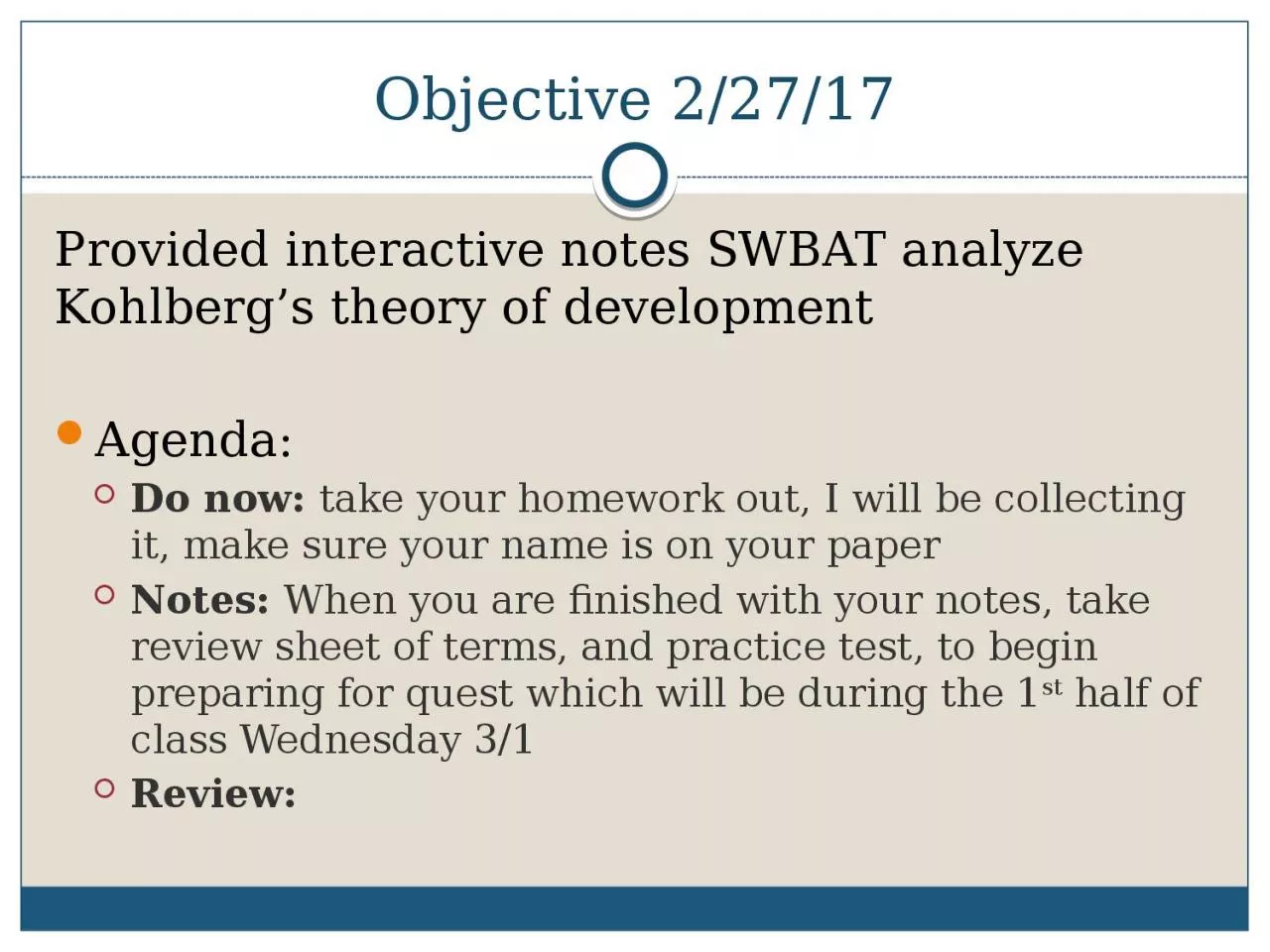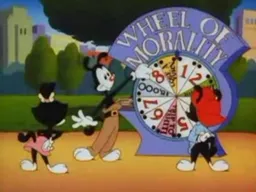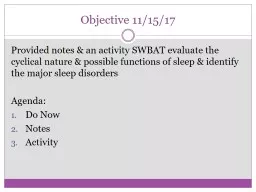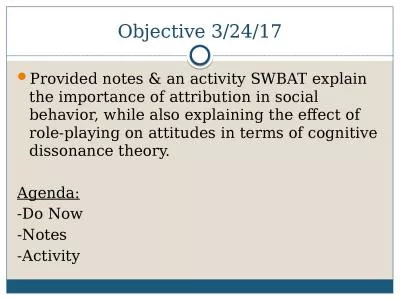PPT-Objective 2/27/17 Provided interactive notes SWBAT analyze Kohlberg’s theory of development
Author : deena | Published Date : 2024-03-13
Agenda Do now take your homework out I will be collecting it make sure your name is on your paper Notes When you are finished with your notes take review sheet
Presentation Embed Code
Download Presentation
Download Presentation The PPT/PDF document "Objective 2/27/17 Provided interactive n..." is the property of its rightful owner. Permission is granted to download and print the materials on this website for personal, non-commercial use only, and to display it on your personal computer provided you do not modify the materials and that you retain all copyright notices contained in the materials. By downloading content from our website, you accept the terms of this agreement.
Objective 2/27/17 Provided interactive notes SWBAT analyze Kohlberg’s theory of development: Transcript
Download Rules Of Document
"Objective 2/27/17 Provided interactive notes SWBAT analyze Kohlberg’s theory of development"The content belongs to its owner. You may download and print it for personal use, without modification, and keep all copyright notices. By downloading, you agree to these terms.
Related Documents














